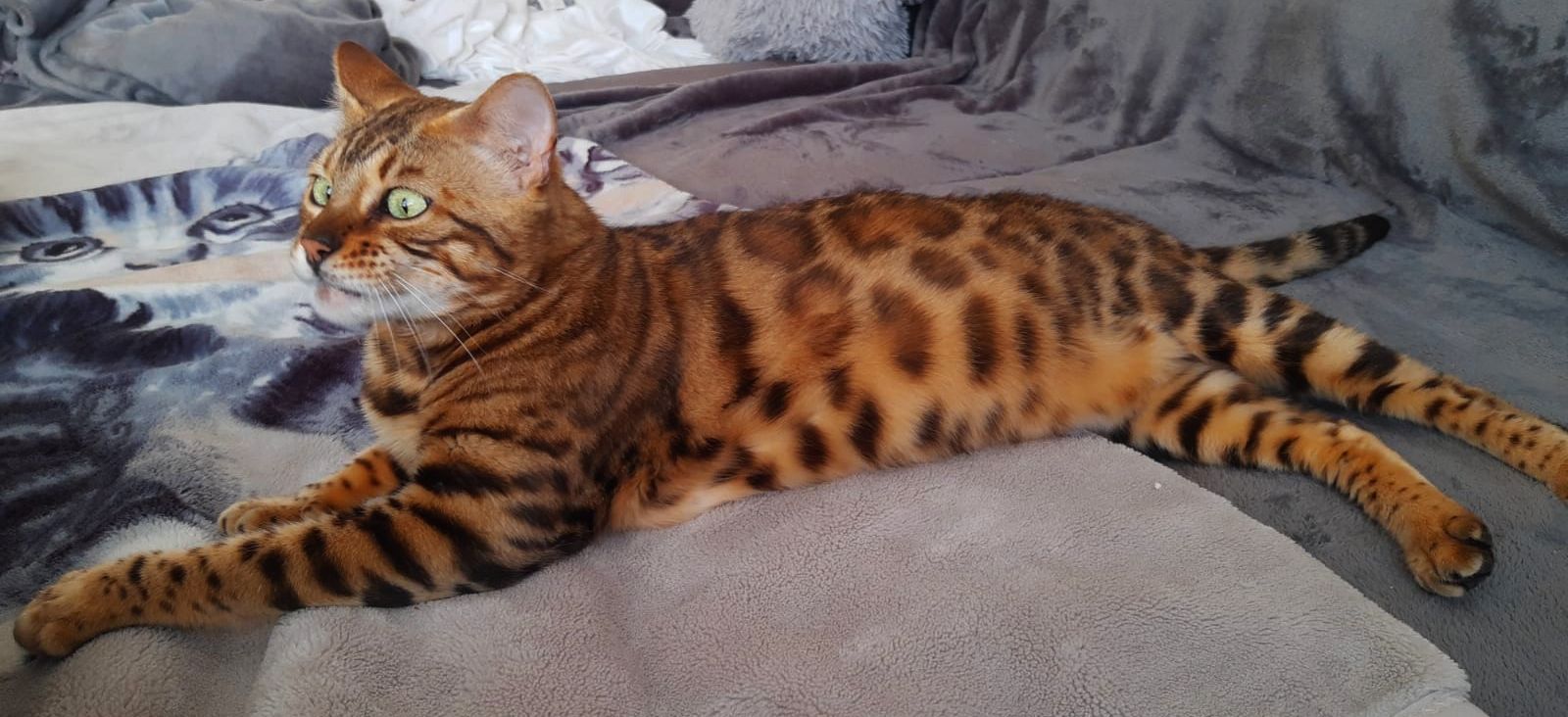The origin of Bengal cats

The Bengal cat, commonly known as a bengal or leopardet, is a breed of cats that comes from the United States. This breed was created by crossing a wild Bengal cat with a domestic cat and belongs to the group of oriental cats. The first records of crossing a domestic cat with a wild Bengal cat come from 1934. The article that touched on this theme was not, however, significant due to the small amount of information. Later, attempts were made to crossbreed wild Bengal cats, at that time this species was threatened with extinction due to its beautiful fur. The American geneticist, Dr. Willard Centerwall, who together with Dr. Raoul Benviste conducted research on domestic feline leukemia, whose course was similar to that of human leukemia, made a significant contribution to the development of the breed. The disease in domestic cats is caused by a virus that is not present in wild Bengal cats.
The Bengal cat officially received its name in 1974 (some sources indicate 1970) and was so named by Bill Engler, who made a significant contribution to the history of the Bengal cat. As for the very origin of the name of the times, there are actually two theories about its origin. One is that the Bengal cat got its name from the Latin name of its wild ancestor, Felis Bengalensis - or the Asian leopard cat. The second theory is that the name of the breed was inspired by Bill Engler - B Engler himself.
In 1980, Jean Sugden Mill re-started her breeding program with a number of Bengal cats (she had been doing research like this in the 1960s). She managed to soften the character of Benglish cats by choosing the right partners. J. S. Mill introduced representatives of other races to the gene pool, which ultimately translated into their final appearance and character. This pool includes the genes of, among others, the American shorthair cat, the Abyssinian cat, and the Egyptian Mau cat. Thanks to the latter, Bengal cats owe their shiny fur effect - glitter.
New breed status for Bengal cats was granted in 1986 by The International Cat Association (TICA), and it was compulsory for all show cats to be pure bengal cats. This means that not a single representative of another race can be found among the ancestors of a given individual up to four generations ago.
As far as Europe is concerned, Bengal cats achieved the champion status only in 2006, although they were brought to Europe itself in the late 1980s.